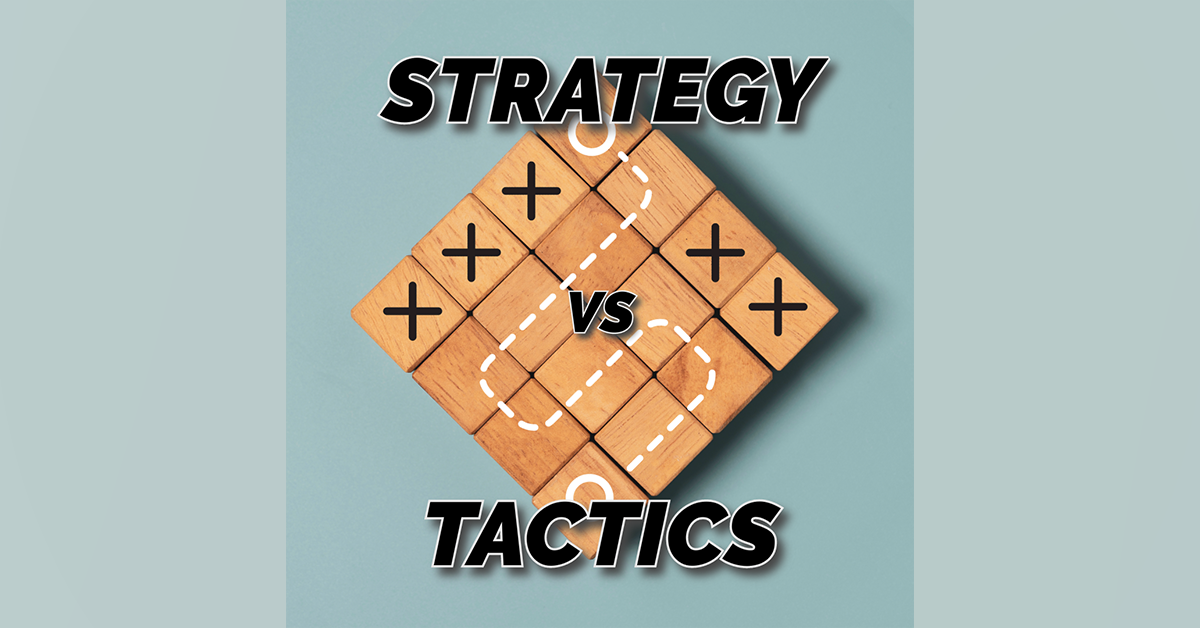
Today’s Morning Buzz is by Greg LeBlanc, Assistant Town Manager, Town of Snowmass Village, Colorado. Connect with Greg on LinkedIn.
- What I’m Watching: Bob’s Burgers
- A Hobby I Enjoy: Sewing
- What’s my favorite color? Blue
How often do those in local government receive the criticism that government should be run like a business? For most municipalities, the operations, staffing plans, and business practices resemble those of private businesses (or rather, do private businesses resemble municipalities?).
There are several primary reasons for why public sector and private sector organizations operate similarly, but this discussion will focus on organizational planning and visioning. A common theme shared by local governments and private businesses is how both utilize well-informed tactics to achieve the clear vision set by strategies for the organization.
Like a business, strategy is commonly set in local government by the legislative body – the Council or Board – and it is up to staff to develop and implement a tactical plan for achieving that vision. Understanding the difference between strategy and tactics can help local government leaders make better decisions that positively affect the efficiency and effectiveness of their organizations.
Strategy vs. Tactics
Chinese military strategist Sun Tzu wrote in his famous work The Art of War that “strategy without tactics is the slowest route to victory. Tactics without strategy is the noise before defeat.” The terms strategy and tactics originate from military applications and have been adopted by today’s modern professional environment to describe the different levels of organizational planning.
The term strategy refers to the roadmap used to achieve long-term goals or visions. A well-defined strategy is important to the planning process because it broadly describes the path an organization needs to follow to achieve its goals. The outputs of a strategy are clear goals.
At finer-detail than a strategy, tactics are specific actions that focus on achieving a singular outcome. Tactical plans include smaller steps over shorter time frames and detail specific resources (people, plans, funding, etc.). Tactics may be combined in series with other tactics. The outputs for tactics are clear deliverables.
Tactics and strategy are not conflicting, but rather complement one another. Think of strategy as defining where you want to take the organization, and the tactics are how you get there. Local government leaders cannot achieve their strategies without tactics because vision without implementation leads to inaction. Conversely, leaders who focus on tactics without strategy can lead teams into burnout because their tactical efforts are not culminating in strategic success.
The Nexus with Operations
Not every action is strategic or tactical. There is a third category of organizational planning that covers everything else – operational. Operational decisions focus on the day-to-day functions of the organization and are the expression of tactical or strategic decisions. When planning at a leadership level, managers should check in with teams to ensure alignment with operations and strategy.
Misaligned operations can be a symptom of communication or structural issues within an organization. Since strategic and tactical decisions are commonly made at the leadership or executive level, these decisions must be communicated to those who are implementing the plans. It is important to note that capitalizing on opportunities for two-way communication can improve tactical thinking. Input from teams that are experts in day-to-day operations can provide valuable feedback to leadership teams developing tactical plans. Who else knows an operation better than those who do the work every day?
Strategic & Tactical Thinking for Local Governments
Understanding the difference between strategy and tactics can help local government leaders organize their efforts and make better decisions. Leaders who communicate clear, strategic goals are more likely to successfully motivate staff and lead effective teams.
Effective strategies in local government start with establishing a clear goal. Use the information available and research if necessary. Accountability and responsiveness are critical components of good governance, so identifying an overarching goal can improve transparency and build trust with those you serve. Know that some flexibility will be required because as more information becomes available or priorities change, the strategy may shift to accommodate those changes. A well-informed strategy is reflective of an organization’s core values, which aligns a tactic’s actions with the strategy’s principles. Local governments also have a duty to serve the public and local government strategies often are reflective of the community’s needs. Local government strategies that align the organization’s values with the mission or directive provided by the community tend to be more successful.
Identify good tactics when implementing a strategy. Local governments are bound by many rules unique to the public sector, which changes how tactics are created and implemented. If the identified tactics are tied to the overarching strategy, local government leaders can maintain the level of transparency and accountability expected by the public. Since tactical thinking is inherently short-term, local government leaders may find success in linking their tactics to the annual budget. Doing so demonstrates that incremental steps are being taken to achieve the overarching strategy by allocating resources every year. Furthermore, tactical actions tied to an annual budget can serve as performance indicators since they are tied to a timeline and dollar amount. This is a tactic often employed by many leaders to share how effective the implementation of a strategy is at a point in time.
Remember to think strategically, and act tactically!
